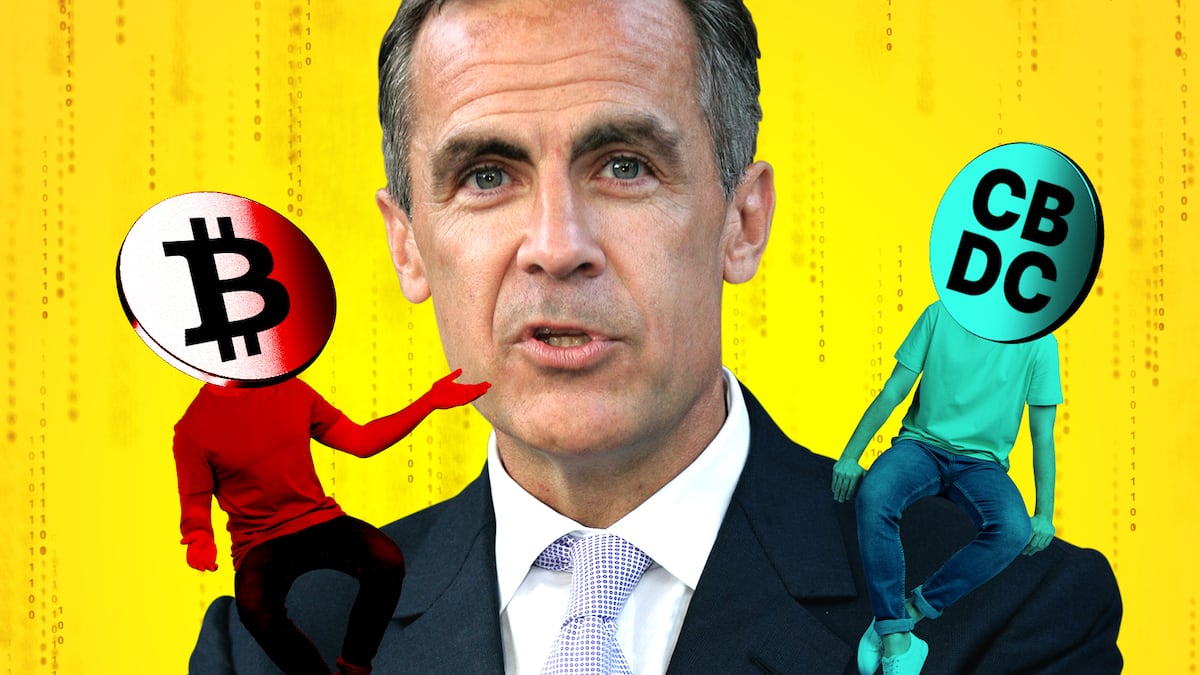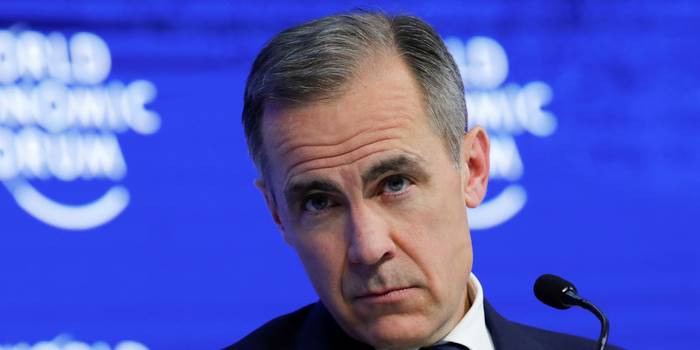Mark Carney's policies may drive blockchain innovation, but strict regulation could limit decentralized development.
Written by: Luke, Mars Finance
On April 28, 2025, Mark Carney, the former governor of the Bank of Canada and the Bank of England, led the Liberal Party to a landslide victory in the Canadian elections, becoming the 24th Prime Minister of Canada. This economist, known for his response to the global financial crisis, made a dramatic transition from the ivory tower of central banking to the tumultuous world of Canadian politics. Carney's victory was partly due to a surge in anti-Trump sentiment and his promise to position Canada as a global leader in emerging technologies. However, for the cryptocurrency community, Carney's election raises an urgent question: how will his cautious, even critical, stance on Bitcoin and decentralized finance shape the future of cryptocurrency in Canada?

A Career Forged in Crisis
Mark Carney's path to the premiership is neither traditional nor unremarkable. Born in Fort Smith, Northwest Territories, and raised in Edmonton, Alberta, he is rooted in Canadian soil, yet his career spans the globe. Carney holds an economics degree from Harvard University and a doctorate from Oxford University, starting his career at Goldman Sachs, where he worked for 13 years in New York, London, and Tokyo, gaining experience in navigating complex financial systems.
In 2003, Carney joined the Bank of Canada as Deputy Governor; in 2008, at the age of 42, he was appointed Governor, successfully leading Canada through the global financial crisis. He introduced innovative policies such as emergency lending mechanisms and forward guidance on interest rates, protecting the Canadian economy from the worst shocks. In 2013, Carney became the first non-British Governor of the Bank of England, managing the chaos of Brexit and the early stages of the COVID-19 pandemic. His calm and data-driven leadership style earned him the title of "rock star of central banking," a moniker that followed him back to Canada.
After leaving the central bank, Carney shifted to roles that balance financial and social impact, serving as the chair of Brookfield Asset Management's Transition Investments and as the UN Special Envoy for Climate Action and Finance. In 2024, he began advising then-Prime Minister Justin Trudeau on economic growth, paving the way for his political ambitions. In January 2025, Trudeau resigned due to plummeting approval ratings and threats from a trade war with the U.S., and Carney seized the opportunity, winning the Liberal leadership with an astonishing 85.9% of the vote. His campaign focused on countering Trump's tariffs and enhancing Canadian sovereignty, deeply resonating with a nation anxious about external pressures.
Carney's Cautious Stance on Cryptocurrency: A Central Bank Perspective
Mark Carney's views on cryptocurrency, particularly his stance on Bitcoin, are deeply rooted in his decades of experience as a central banker. He believes that the stability of the financial system and centralized control of monetary policy are the cornerstones of economic functioning, and that decentralized cryptocurrencies challenge this framework. As early as 2018, Carney spoke at the Scottish Economic Conference, explicitly stating that Bitcoin has "serious flaws." He argued that Bitcoin's fixed supply of 21 million coins would lead to deflationary tendencies, making it difficult to serve as a stable store of value or reliable medium of exchange. In a Q&A session at Regent's University London, he elaborated: "Bitcoin has almost completely failed in the functions of traditional currency." He particularly criticized its price volatility, pointing out that Bitcoin's price plummeted from nearly $20,000 to below $3,000 between 2017 and 2018, highlighting its unsuitability as a tool for everyday transactions.
Carney's criticism extends beyond Bitcoin's technical flaws to its social and economic impacts. In a 2018 interview with Bloomberg, he stated that Bitcoin's anonymity makes it a breeding ground for money laundering and illegal transactions, threatening the integrity of the financial system. He warned that the chaotic expansion of the cryptocurrency market could trigger systemic risks, similar to the uncontrolled derivatives market before the subprime crisis. Additionally, Carney expressed concerns about the rise of stablecoins. In a 2021 speech to the Bank for International Settlements, he noted that stablecoins backed by tech giants (such as Facebook's then-planned Libra) could lead to a fragmentation of liquidity in the monetary system and even undermine the monetary sovereignty of central banks. He argued that the centralized nature of stablecoins—controlled by a few companies—fails to address the volatility issues of decentralized cryptocurrencies while introducing new governance risks.
At the same time, Carney has consistently been a strong advocate for Central Bank Digital Currencies (CBDCs). He believes that CBDCs can not only provide the convenience of digital payments but also ensure financial stability and regulatory transparency through centralized management. In a 2020 speech, he proposed: "CBDCs can enhance the transmission efficiency of monetary policy while reducing the risks posed by private cryptocurrencies." He emphasized that CBDCs could combat illegal financial activities through traceable transaction records while offering consumers lower transaction costs than existing payment systems. Carney's position aligns with global central bank trends, such as the People's Bank of China's digital yuan experiment and the European Central Bank's digital euro initiative.
However, Carney's complex attitude toward cryptocurrencies is not entirely dismissive. During his tenure on the board of Stripe from 2021 to 2025, the company launched payment solutions supporting cryptocurrencies, allowing merchants to accept digital assets like Bitcoin. This indicates that Carney recognizes the potential of cryptocurrencies in specific business contexts, albeit under strict regulation. Carney stated at a fintech conference in 2021: "Blockchain technology itself has revolutionary potential, but its applications must align with the public interest." This stance reflects a balance between his support for technological innovation and his reservations about decentralized ideals. He may prefer to see blockchain technology applied in controlled scenarios such as supply chain management, cross-border payments, or digital identity verification, rather than in an anarchic cryptocurrency ecosystem.
Carney's central bank background makes him highly sensitive to the risks in financial markets, which partly explains his cautious stance on cryptocurrencies. As a decision-maker who once navigated the global financial crisis and Brexit, he is acutely aware of the ripple effects that financial innovation can bring. In a 2019 speech to the UK Parliament, he mentioned: "The rapid development of cryptocurrencies requires a globally coordinated regulatory framework, or we may repeat the mistakes of the 2008 financial crisis." This systemic thinking leads him to favor integrating digital finance into the existing financial system rather than allowing it to grow unchecked outside of regulation.
The "Tightening Noose" of Cryptocurrency: Where Does Canada Go from Here?
Carney's premiership may usher in a cautious and stringent regulatory environment for Canada's cryptocurrency industry. Unlike Pierre Poilievre, the Conservative leader who openly supports cryptocurrencies and criticizes Trudeau's anti-crypto policies, Carney's campaign platform emphasizes "prudent" innovation. Morva Rohani, executive director of the Canadian Web3 Council, told Cointelegraph that cryptocurrency is unlikely to become a major election issue, as more pressing matters like housing, affordability, and Trump's tariffs dominate the agenda. However, Carney's past statements indicate that digital finance will not be overlooked—only strictly controlled.
First, Carney may push for the development of CBDCs. His long-standing support for a Canadian digital dollar aligns with the Bank of Canada's ongoing exploration of CBDCs. Unlike the decentralized nature of Bitcoin, CBDCs would grant the government comprehensive regulatory authority over transactions, raising concerns among cryptocurrency purists. The memory of the Trudeau government's freezing of bank accounts and crypto transactions during the truckers' protests in 2022 is still fresh, and Carney's ideological alignment with Trudeau on CBDCs may exacerbate public skepticism toward cryptocurrencies.
Second, Carney's commitment to positioning Canada at the forefront of "artificial intelligence, technology, and digital industries" may provide opportunities for blockchain innovation, but only under strict constraints. His platform emphasizes AI-driven economic reform, and the potential of blockchain in secure and transparent data management could complement this. However, any blockchain development may occur within a regulated, government-approved framework, potentially marginalizing decentralized protocols like Bitcoin and Ethereum. Users on X, such as @JinJooWon, reflect this sentiment, stating that Carney's policies may "ignite blockchain innovation" but make "decentralization a struggle."
Third, Carney's focus on responding to U.S. tariffs may limit the growth of cryptocurrencies. Trump's trade war, including a 25% tariff on Canadian steel and aluminum and broader tariff threats, has raised concerns about economic recession. Carney's response—retaliatory tariffs and diversifying trade partners—demonstrates a pragmatic and risk-averse stance. In this context, the volatility and regulatory uncertainty of cryptocurrencies may be viewed as a burden rather than an asset.

Carney vs. Trump and Trudeau: The Dichotomy of Cryptocurrency
To understand Carney's potential impact on cryptocurrency, it is essential to compare him with U.S. President Trump and former Canadian Prime Minister Justin Trudeau.
Donald Trump: The Antithesis of Pro-Crypto
Trump's second term, which began in January 2025, unexpectedly shifted toward supporting cryptocurrencies. He signed an executive order banning a U.S. dollar CBDC while establishing a strategic reserve for Bitcoin, contrasting sharply with his previous stance. Trump's support for cryptocurrencies as a tool against inflation has energized the U.S. crypto community. His policies directly oppose Carney's position, potentially creating rifts in U.S.-Canada relations.
Carney advocates for centralized control and CBDCs, while Trump embraces decentralization, which could attract crypto investment to the U.S. Canadian crypto startups, already facing strict regulations, may find the U.S. more appealing. Additionally, Trump's tariffs and annexation threats have dominated Canadian political discourse, overshadowing domestic issues like crypto regulation. Carney's focus on countering Trump's economic aggression may leave him little time to formulate detailed crypto policies, further reinforcing a conservative stance.
Justin Trudeau: Continuity and Change
Carney's predecessor, Trudeau, also held a skeptical view of cryptocurrencies. In 2022, he condemned Poilievre's pro-crypto platform as "reckless." The Trudeau government prioritized the development of CBDCs and froze crypto transactions during the 2022 truckers' protests to curb protest funding. Carney's views align closely with Trudeau's stance on CBDCs, but his global financial experience and technocratic style set him apart.
Trudeau's crypto policies have been reactive, driven by political crises, while Carney's policies may be more proactive, rooted in his central banking philosophy. His emphasis on artificial intelligence and technology suggests a more strategic approach to digital finance, potentially integrating blockchain into government services while maintaining a distance from decentralization. However, unlike Trudeau, who has years of experience as an elected official, Carney may be less attuned to public sentiment, particularly among young Canadians who support crypto policies.
A Long Road Ahead: Balancing Innovation and Control
With Carney at the helm, his cryptocurrency policies may reflect a broader governing philosophy: robust, prudent, and stability-first. His skepticism toward Bitcoin and decentralized finance, stemming from his central bank background, suggests that Canada's crypto industry will face stricter regulations and the advancement of CBDCs. However, his commitment to technological leadership opens the door for blockchain innovation, provided it aligns with government priorities.
For the Canadian crypto community, the challenge lies in promoting decentralization within a regulated environment. Carney's global perspective and crisis management expertise make him a strong leader, but his top-down approach may conflict with the grassroots spirit of crypto. As one X user put it: "Will digital finance soar while decentralization struggles?" The question is not whether Carney will shape the future of Canadian crypto—he will—but whether he can find a balance between innovation and control.
Compared to Trump's pro-crypto policies and Trudeau's reactive measures, Carney's vision is both ambitious and cautious, a technocratic blueprint for the technological age. Whether this vision will elevate Canada's technological leadership or stifle its crypto potential remains to be seen. For now, the world is watching Carney, the crisis-management banker, as he faces his greatest challenge yet: leading Canada through the unknown waters of trade wars, technological revolutions, and digital finance.
免责声明:本文章仅代表作者个人观点,不代表本平台的立场和观点。本文章仅供信息分享,不构成对任何人的任何投资建议。用户与作者之间的任何争议,与本平台无关。如网页中刊载的文章或图片涉及侵权,请提供相关的权利证明和身份证明发送邮件到support@aicoin.com,本平台相关工作人员将会进行核查。




